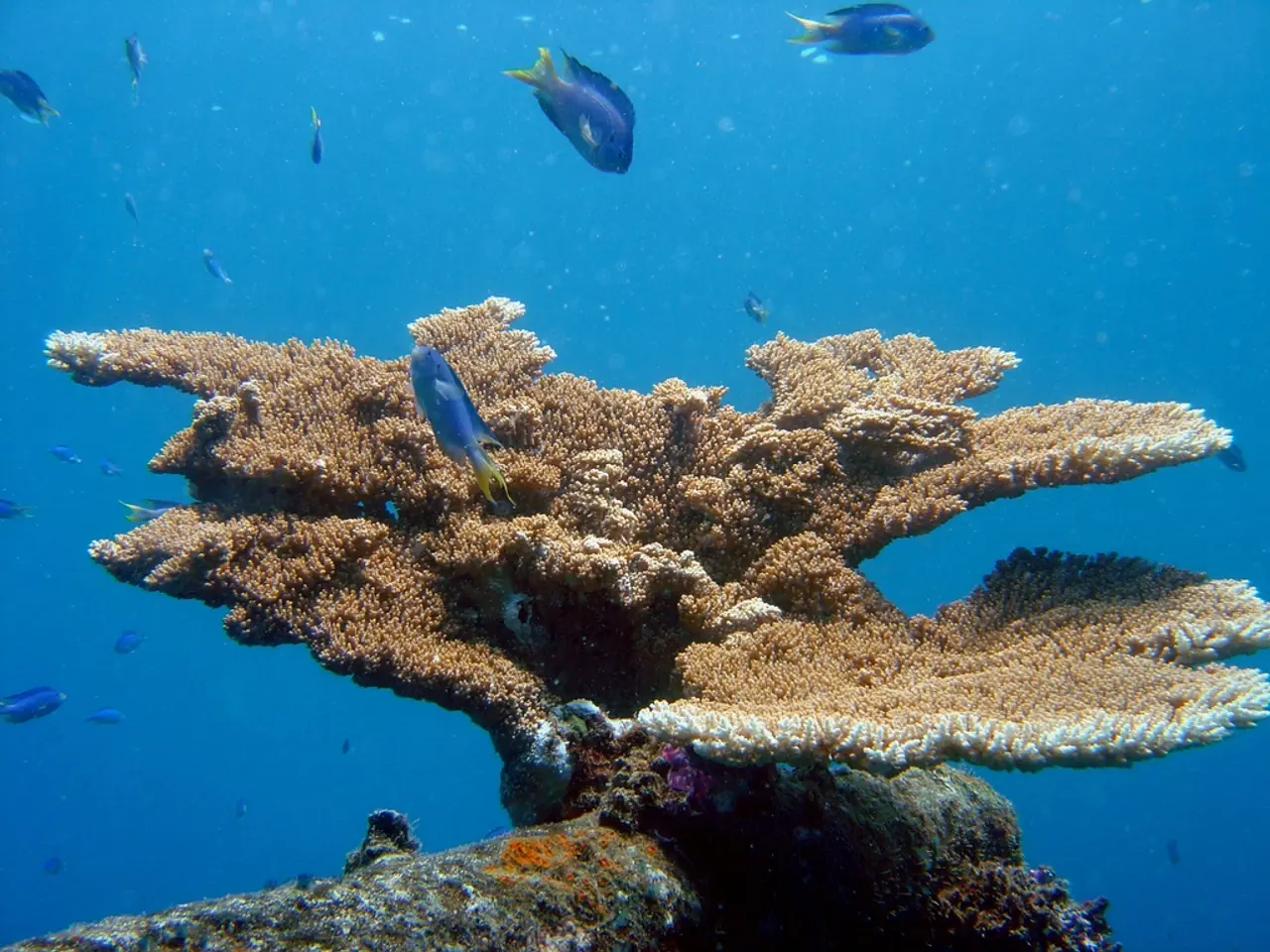Baffled Researchers Encounter Perplexing Creature Demonstrating Life-like Qualities Yet Resembling Inanimate Objects
In a groundbreaking discovery, scientists have unveiled Sukunaarchaeum mirabile, a microorganism that is set to reshape our understanding of cellular evolution. This intriguing find, a member of the Archaea domain, is pushing the boundaries of life as we know it, blurring the lines between cellular life and viruses due to its drastically reduced genome and metabolic dependence on a host organism [1][3][4].
Sukunaarchaeum mirabile boasts the smallest known archaeal genome, with just 238,000 base pairs—less than half the size of the smallest previously known archaeal genomes and smaller than many viral genomes [1][3][4]. The organism primarily encodes the machinery for DNA replication, transcription, and translation, but lacks recognizable metabolic pathways [1][3][4].
This microscopic marvel appears to be a holoparasite of the marine plankton *Citharistes regius*, lacking essential metabolic functions and relying heavily on its host cell machinery. Notably, it contains only two ribosomal genes, implying it hijacks the host’s ribosomal machinery for reproduction, a characteristic more typical of viruses than cellular organisms [3][4].
Because it exhibits cellular features yet is metabolically dependent to an unprecedented degree on its host, Sukunaarchaeum mirabile challenges the classical functional distinctions between minimal cellular life and viruses. This discovery suggests that the categories of life may be more fluid and continuum-based than previously thought, particularly among microbial entities [1][4].
Being part of Archaea, a domain from which eukaryotes evolved, Sukunaarchaeum mirabile provides valuable insights into early cellular evolution and symbiotic relationships. Its extreme genome reduction and dependence may reflect evolutionary strategies that blur the line between independent life and viral-like parasitism, thus influencing our models of how cellular life and viruses evolved [1][4].
The finding highlights vast unexplored microbial diversity and suggests that further study of symbiotic and parasitic interactions in microbial systems could reveal even more extraordinary life forms that challenge established biological classifications [4].
The discovery of Sukunaarchaeum mirabile pushes the conventional boundaries of cellular life, compelling scientists to reconsider the fundamental criteria used to define living organisms. Understanding Sukunaarchaeum's relationship with its host and its survival mechanisms could provide crucial information about the origins of life [1][3][4].
Moreover, the study of Sukunaarchaeum could have far-reaching implications for the search for extraterrestrial life, broadening the range of potential life forms to consider. As a potential transitional form of life, it has the potential to reshape our understanding of cellular evolution [1][3][4].
The discovery underscores the importance of studying microbial ecology to gain insights into human health. Sukunaarchaeum mirabile, by its interaction with other microbes, plays critical roles in maintaining the delicate balance of life on Earth [1][3][4].
In essence, Sukunaarchaeum mirabile exemplifies a newly recognized form of life existing at the interface between autonomous cells and viruses, offering a wealth of opportunities for further research and redefining our understanding of life on Earth.
The unique characteristics of Sukunaarchaeum mirabile, such as its small genome and reliance on a host cell for metabolism, challenge the traditional boundaries between cellular life and viruses in the field of medical-conditions and environmental-science. This discovery could also have significant implications in the realm of technology, particularly in the search for extraterrestrial life in space-and-astronomy.




